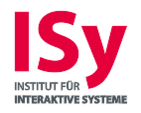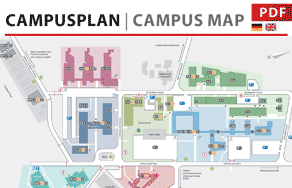Who are you and what kind of conference was it?
I am Dr. Tina John and a software developer at the Institute for Interactive Systems at TH Lübeck. Anna Lena Möller, Thorleif Harder, Gilbert Dryzga and I were virtual guests in Washington, DC to explain and discuss technologies, methods and evaluation possibilities for the design of human-computer interaction in 21 different subject areas with 2202 other participants from 69 different countries.
How did you get involved in the event?
I myself gave a lecture on the subject of LEARNING AND COLLABORATION TECHNOLOGIES with the titel:
I also presented a concept and the first implementation of On-demand Internationalization for Learning Management System Moodle as a poster over the entire 6 days of the conference, with the support of Anna Lena Möller.
What did you take away from the event?
Personally, what I took away from the event is that I'm not the only one who sometimes gets a queasy stomach in a virtual or mixed reality environment, or fears getting one. The good news is that there are researchers who are trying to make this interface between humans and computers more digestible.
AR classrooms and various VR approaches can unfold their strengths in an educational context, among others. However, the use of various technologies also enables synchronous face-to-face learning in distant real learning spaces. The virtual world has not yet been able to convincingly surpass the real world in terms of added value, but the adaptivity of learning programs to the individual learning process, which can be implemented more easily in digital space, has. However, the adaptability of learning environments and learning paths goes far beyond the individual learning process; solutions were presented that take into account different motivations or the stress level of learners, whereby AI can be used to provide support. Various virtual learning companions can have a motivating effect.
The topic of AI was also represented outside the field of education with interesting results and approaches, for example when different AIs compete against each other or search for solutions together.
I was fascinated, but also worried, by the variety of problems for which the interaction between humans and computers was presented internationally as a solution. For example, a virtual companion combined with a physical dummy of a stroking arm could be a solution to sleep problems. Can it do that? Should it?
Name a highlight from the event
When 69 nations exchange ideas about HCI in 290 parallel sessions on 21 topics, then that is a highlight. The conference organizers made it possible to simply look beyond the local and thematic horizon and gain insights into problems and solutions from all corners of the world through an appealing technical implementation.



![['English'] ['English']](/fileadmin/_processed_/0/e/csm_full_pei.peace_1719874077_0_e8d07efdb4.jpeg)

